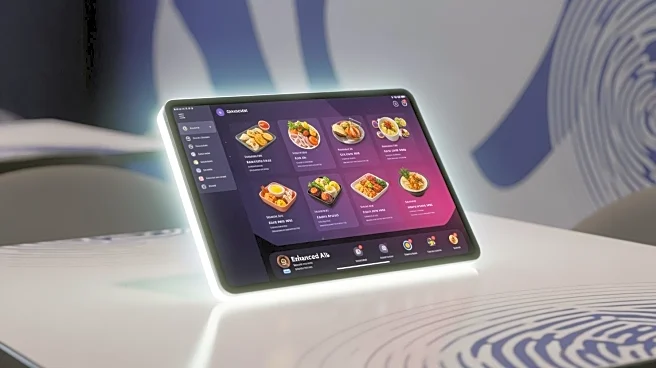What's Happening?
Telecom companies are increasingly adopting GraphQL APIs as a middleware abstraction layer to modernize their systems. Traditionally, telecom operators have relied on monolithic middleware stacks like
Tuxedo, TIBCO, and SOAP services to integrate backend systems such as CRM, billing, and network operations. These systems, while powerful, are rigid and not designed for the fast-paced digital environment. GraphQL APIs offer a schema-driven intermediary that simplifies backend complexity, allowing frontend teams to build faster and backend teams to evolve safely. This approach reduces over-fetching and under-fetching of data, streamlines integration, and accelerates release cycles. By consolidating and normalizing data across multiple sources, GraphQL middleware provides UX developers with precise data requests, enhancing user experience and operational efficiency.
Why It's Important?
The adoption of GraphQL middleware is significant for telecom operators due to the complexity of their IT landscapes. It enables a unified customer view by federating data across CRM, billing, provisioning, and inventory systems. This reduces integration code and maintenance efforts, speeds up partner onboarding, and improves real-time visibility across various operational layers. The centralized schema versioning enhances governance and compliance, crucial for regulated industries like telecom. Beyond telecom, industries such as banking, healthcare, and retail are also benefiting from GraphQL middleware, which bridges legacy systems with modern applications, shortens app release cycles, and improves data access security. This trend represents a shift towards agile, composable ecosystems that can evolve continuously without disrupting user experiences.
What's Next?
GraphQL middleware is expected to become a key component in modern enterprise systems, especially as industries move towards cloud-native architectures. The next frontier involves AI-assisted orchestration, where intelligent middleware dynamically rewrites queries based on context, load, and user intent. This will lead to self-optimizing digital platforms that efficiently serve data, further simplifying complexity and unlocking innovation. For telecoms, this flexibility is invaluable as they balance 5G expansion, fiber rollouts, and IoT ecosystems. The continued convergence on GraphQL middleware will likely enhance resilience and innovation in user experiences across various sectors.
Beyond the Headlines
GraphQL middleware not only improves technical efficiency but also has broader implications for enterprise architecture. It represents a shift in mindset towards designing systems that are adaptable to change, allowing organizations to innovate at the edge without rewriting core systems. This architectural approach supports the launch of new digital experiences, partners, or geographies, fostering a culture of continuous improvement and resilience. As industries increasingly rely on data-driven decision-making, GraphQL middleware's ability to simplify data access and integration will be crucial in maintaining competitive advantage and operational agility.











